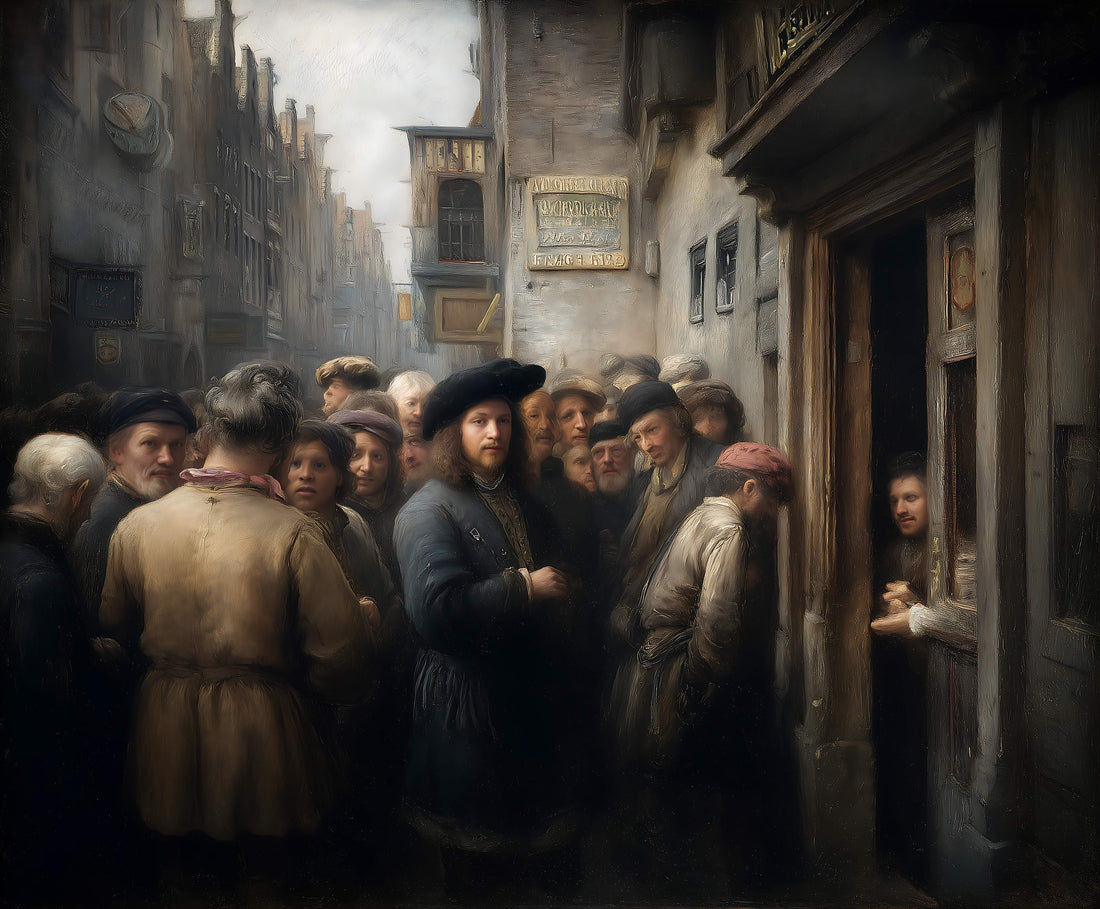
Prompts and Expressions #1: Kyoto AI Sketch
Share
September 11, 2025 – October 7, 2025
9:00 - 16:00 (open daily)
Prompts and Expressions #1: Kyoto AI Sketch
Period: Thursday, September 11th to Tuesday, October 7th, 2025, 9:00 AM - 4:00 PM, open daily
Venue: OM Art × Music (8th floor, 735-3 Higashishiokojicho, Shimogyo Ward, Kyoto City, Kyoto Prefecture)
Organized by: OM Art × Music / Planned by: Hiroshige Fukuhara

People of Pontocho

Shrine maiden at a Kyoto shrine
People began to "draw" by carving lines into cave walls and layering colors.
During the Renaissance, Brunelleschi experimented with the first-person perspective, and Alberti theorized it as a geometric structure. The camera obscura (black box) was also utilized, making a significant contribution to painting as a tool for realistic depiction. The act of tracing a projected landscape has the advantage of allowing for the optical creation of perfect perspective. However, there was criticism at the time that this was merely a tracing, rather than the artist's own original composition. Nevertheless, many works created using this technique existed and were accepted by the public as paintings. There is some debate (though there is no definitive proof) as to whether Vermeer's famous pointe technique also involved the use of a camera obscura. Nevertheless, there is no doubt that his works are of excellent quality.
As time went on, new techniques emerged, including the creation of artworks using computer-generated images, tracing with a projector, and transferring the output of a large printer to create oil paintings. Techniques and expressions are constantly changing with the evolution of technology. While their merits are debated, they cannot be measured in terms of good or bad.
So, is there anything wrong with tracing an image generated by AI as a sketch in this day and age? Shouldn't an AI-generated image be a work of art in itself? Or is there a problem with using it as a new form of sketch for a painting?
Another perspective is that painting is not always art. Painting is merely one "means" of expression, and art is a much more diverse and complex endeavor that extends beyond that. Expressions are not limited to two-dimensional media, but also encompass three-dimensional forms, text, sound, experiences, phenomena, and more. So, can AI-generated images also be positioned within this chain of "diversity of means"?
This collaboration between technology and expression has brought us to the age of generative AI, where prompts that once required complex syntax can now describe the world in a single word. In the field of single-image visualization, even the term "prompt engineering" is already becoming obsolete. With the use of AI, we now live in an age where anyone can relatively easily create the visuals they desire. The seemingly perfect worlds created by AI will likely highlight the value of imperfection and accidental expression, which are uniquely human. *
Is AI simply a tool, or a "convivial instrument" that expands human creativity? Or, like the camera obscura of the past, could it be a stepping stone to the next generation of creativity? The evolution of technology has always posed fundamental questions to us: "What does it mean to draw?" and "What is art?"
By juxtaposing the prompts with the artworks, this exhibition showcases the relationship between the text and the images that emerge from it.
This time, the theme was "Kyoto," and prompts incorporating Kyoto scenery and locations were used, assuming different styles such as Rembrandt, anime, and CG. Some of the generated results were beautiful as expected, while others produced unexpectedly unnatural or strange expressions. Please enjoy both the high level of accuracy and the humor that arises from the discrepancies.
Even if you don't understand the complex logic, just looking at the visuals is enough. With the theme of the culture and spirituality of the city of Kyoto, you can casually enjoy the amazing accuracy of the generative AI and the fun of its failures, and suddenly think about the future of "drawing" and "creating."
I hope I can bring you such a moment.
Hiroshige Fukuhara
※ The drawings created by the generated AI are highly polished and beautiful, but I get the impression that they are not able to create tasteful or unsophisticated expressions. In English-speaking countries, this is called Fractured Perspective. Hand-drawn quality, Fragile presence, Primitive style. It is impossible for an AI to reproduce a style of expression such as "unrefined energy." Simply put, it seems difficult to reproduce the strong individuality of artists like Basquiat or Hockney. On the other hand, it can be said that the reproduction of beautiful paintings such as those by the Pre-Raphaelites is quite high. At the very least, it can be said that today's generative AI is good at reproducing such beautiful expressions and visuals that appear highly polished at first glance.
*The prompts for this exhibition have been intentionally created to be simple and short. The intention is to show that even fairly simple expressions can be visualized to this extent, rather than complex expressions.
*At present, the rights to images created by generative AI are in a gray area. According to the Agency for Cultural Affairs, It is said that "in principle, anything generated autonomously by AI is not a work of authorship," but anything that reflects ideas is conceptually a work of authorship, so from the perspective of separating the parts created by humans and the parts created by AI, The Agency for Cultural Affairs' perspective, The U.S. Copyright Office's view is quite similar.
On AI and copyright (Agency for Cultural Affairs)
https://www.bunka.go.jp/seisaku/bunkashingikai/chosakuken/pdf/94037901_01.pdf
US Copyright Office https://www.copyright.gov/ai/ai_policy_guidance.pdf
